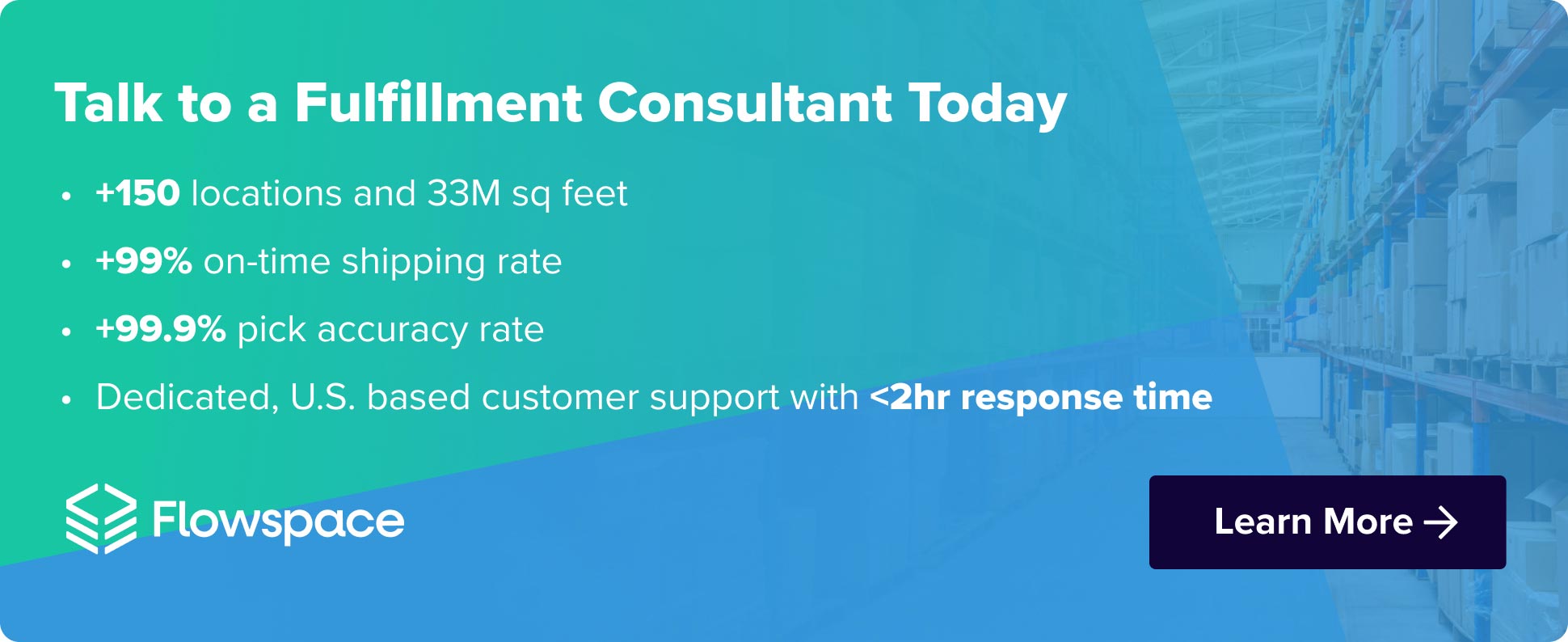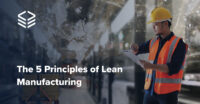
Your brand has created a product that everyone wants, and the SKUs are flying off the digital shelves. Congrats!
Now, how can you make sure you have enough stock to handle customer demand but not so much that overflow product spills into the aisles in your warehouse? And how can you handle those inevitable returned products and stock increases for seasonal products?
Figuring out that sweet spot brings together costs, profits, logistics, and, most importantly, customer satisfaction. Streamlining inventory management operations—while keeping an eye on warehouse overflow—can ensure your brand doesn’t fall victim to some of the most common pitfalls of managing overflow storage.
Common overflow storage issues
The common challenges that companies face when it comes to overflow storage include poor inventory control, inadequate overflow locations, irregular tracking, and inconsistent inventory updates.
Overflow inventory is a commonly overlooked aspect of inventory control and this can immediately impact storage and compound existing overflow storage issues. Storage space is at a premium in warehouses, and not designating an area—or even several areas—for overflow products can quickly become unsustainable. Not getting regular inventory updates can mean a brand doesn’t fully understand what’s happening with its products, including its overflow products. It’s critical to understand where every piece of inventory is so that no product sits on a shelf with no destination or purpose.
These common overflow storage challenges can impact every part of your business, threatening profit, reducing customer satisfaction, and hindering brand growth. Every brand needs to figure out ways to mitigate these common issues.
Avoiding common overflow storage issues
Although overflow storage is a challenge that all ecommerce brands will face, there are several ways to mitigate the most common issues. Here are four ways to avoid those common issues and efficiently and effectively manage overflow storage.
Invest in an inventory tracking system
Inventory management is critical to ensuring that you have enough—but not too much—inventory. Having an accurate view of your existing inventory is important to ensure the optimal stock level to fulfill customer demand without wasting resources on excess inventory.
The line between stockouts and overflow can be thin, and investing in an inventory tracking system ensures that every product in every warehouse (if you’re using more than one fulfillment center) is accounted for. This makes sure products don’t get overlooked and stuck on warehouse shelves.
An inventory tracking system that offers real-time and regular updates provides actionable inventory data to help you make informed stock decisions.
One critical stock decision your brand needs to make is about safety stock. You want to make sure you can weather any unplanned shifts in supply or demand for your products by ensuring an adequate amount of stock, known as safety stock. An inventory tracking system can identify the popularity of each product from greatest to lowest and help gain insight into which products sell best and how often.
Another critical stock decision is calculating the inventory turnover ratio, or the rate at which you replenish inventory in any given time period due to sales. The figure is calculated by dividing the cost of goods by average inventory. This can be used to identify excessive inventory levels compared to sales during any given time period. An inventory management system can help you determine this ratio.
Flowspace offers industry-leading ecommerce software that powers insights and efficiencies for merchants selling online and ensures effective inventory tracking. The Flowspace platform offers real-time visibility into orders, inventory, and more, and offers easy-to-implement control over supply chain systems.
Optimize the layout of your fulfillment center
Your product has to be stored somewhere before it’s sent out to customers, and making sure that storage and fulfillment operations run as smoothly as possible can ensure speed, accuracy, and efficiency. A crowded, unorganized fulfillment center can increase fulfillment speeds and create a dangerous work environment.
One of the most critical aspects of fulfillment center organization is managing overflow storage. Without a designated area for overflow storage, it will be difficult for employees to track, locate, and pull those products. But space is always at a premium, so making sure your fulfillment center is organized to make the most of the available space is key to managing overflow storage.
Designating space for different types of overflow storage—returned goods and seasonal products, for example—in areas of the warehouse that make sense can save time and increase efficiency. For example, designating space for returned goods near the unloading dock to put some ease on the return process.
But it’s not just important to have designated areas for overflow storage; it’s also important to incorporate overflow into every area of the warehouse. Ensuring you have extra room in your racks for excess products can make sure products are found where people are looking for them.
Exploring different types of order picking methods, and determining how best to incorporate an overflow storage zone, is another way to optimize your fulfillment center layout for speed, accuracy, efficiency, and success.
Outsource fulfillment to a 3PL
Outsourcing fulfillment to a third-party logistics company (3PL) offers many benefits to a growing marketplace or ecommerce sales. Benefits include increased efficiency, reduced costs, and risk mitigation, among others.
The key benefit outsourcing can offer your brand when it comes to managing overflow storage is flexibility in storage capacity. That’s something you just cannot get by managing your own fulfillment.
Think about seasonal fluctuations in demand or even seasonal products that are only stocked at a certain time of year. The ability for your storage capacity to adjust to those changes can not only maintain your shipping standards (and with it, customer satisfaction), but also allow you to better respond quickly when you need to.
Flowspace connects merchants to a national fulfillment network that enables sellers to offer consistently fast, efficient delivery from every channel and provides for flexible overflow storage.
Create a plan for excess inventory
Even with the best inventory management, stock overflows happen. That’s why it’s key to create a plan for what to do with that excess inventory before it happens.
There are really two main options: cutting prices to move excess inventory quickly and storing inventory until demand increases. While cutting prices can move the excess inventory and reduce the need for overflow storage, it doesn’t come without its own risks. The supply chain can be notoriously slow to react to market shifts, and spending habit changes forced many major retailers to clear out excess inventory by slashing prices.
In order to take advantage of holding onto the excess inventory, a brand needs to have the storage capacity and a way to predict future demand. A tool like Flowspace’s Inventory Flow software helps brands determine inventory needs. Having a real-time, detailed look at exactly what inventory you have can help you weather and manage any big changes.
Don’t let poor inventory control, inadequate overflow locations, irregular tracking, or inconsistent inventory updates hinder your brand’s growth. Make sure you invest in an inventory forecasting tracking system, optimize the layout of your fulfillment center, outsource fulfillment, and create a plan for excess inventory to make sure your brand can handle overflow storage without missing a beat.
Flowspace software and nationwide fulfillment network can ensure your ecommerce fulfillment is as efficient as it can be, which can prevent all sorts of supply chain hiccups, including overflow storage issues. Get in touch with Flowspace to find out how it can help your brand better manage and control inventory to avoid the most common overflow storage issues.







